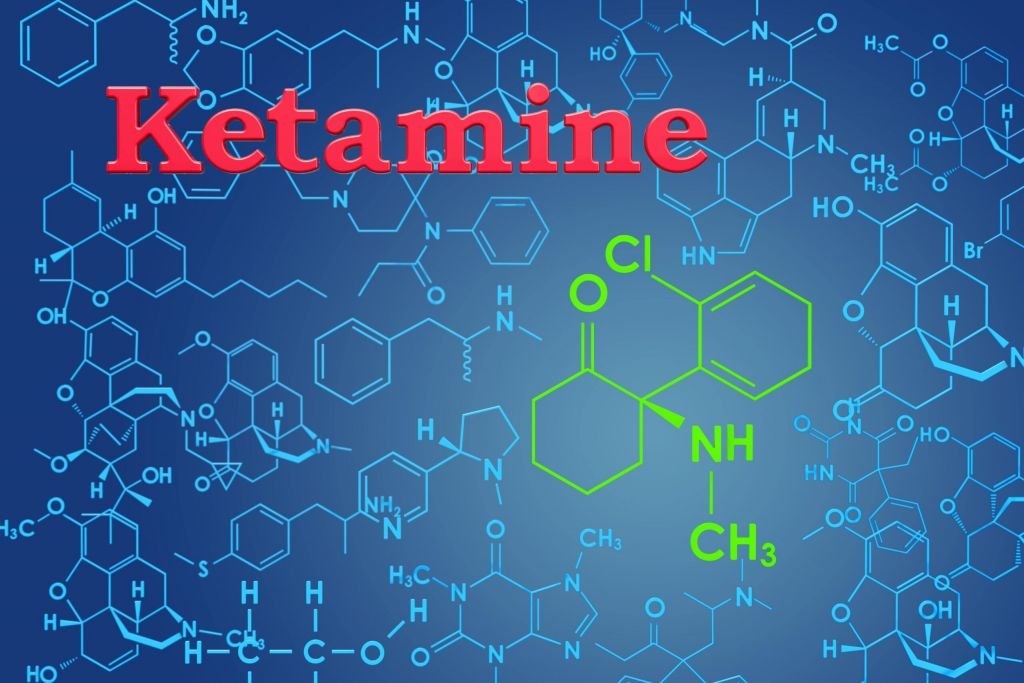"Ketamine, like all psychedelics, is a vehicle that allows us to face our suffering and change our relationship to it."
―Dr. Alan Schatzberg, Professor of Psychiatry at Stanford University
Ketamine is a synthetic drug originally developed as an anesthetic. It quickly became a go-to choice for doctors due to its safety profile for children, adults, and the elderly. It’s also widely used in veterinary medicine.
Since 1970, ketamine has been used as an anesthetic and remains on the World Health Organizations list of essential medicines.
As patients began reporting dissociative effects, researchers began studying ketamine for its mind-altering properties.
Once esketamine was Food and Drug Administration (FDA) approved, ketamine therapy clinics emerged across the US and later in Canada to offer it as an off-label treatment for treatment-resistant depression.
Timeline of Ketamine’s History
1962
Ketamine was first synthesized by Calvin Stevens of Parke-Davis, Michigan to replace Phencyclidine as an anesthetic.
1964
Ketamine (initially known as CI-581) was tested on human prisoners, where it coined the term 'dissociative anesthetic
1967
Dr. Salvador Roquet, a Mexican pioneer in psychedelic psychotherapy started to use ketamine and other mind-altering substances (LSD, psilocybin mushrooms, and ololiuqui seeds (morning glory seeds)) as an adjunct to psychotherapy.
1970
Approved by the FDA in the US as an anesthetic suitable for children, adults, and the elderly.
1980’s-
Russian Psychiatrist and Professor, Evgeny Krupintksy, studies ketamine for treating addiction, with a primary focus on alcohol addiction.
Ketamine becomes popular in the rave culture.
1990’s
Ketamine was added to the US DEA’s “emerging drugs list” and eventually labeled as a Schedule III drug, making it illegal to possess without a prescription.
2000’s
Research on the effectiveness on ketamine for treating eating disorders, alcoholism, depression, anxiety, PTSD, chronic pain, and suicidality.
2019
Esketamine is US FDA approved for treatment resistant depression. Available only through a certified doctors office or clinic.
2020
The Science of Ketamine
Ketamine works on a chemical system in the brain called glutamate. Glutamate is the main amino acid in the brain, found in 80% of brain cells. It is an important neurotransmitter that regulates psychological conditions like depression and anxiety, and transmits pain signals.
Research shows that ketamine interacts with glutamate receptors by inducing some (AMPA) and blocking others (NMDA). This process stimulates the production and release of BDNF (brain-derived neurotrophic factor), often referred to as “fertilizer for the brain,” which promotes the growth, maintenance, and survival of neurons—supporting neuroplasticity, the brain's ability to change and adapt.
By blocking specific receptors, ketamine triggers a cascade of chemical reactions that relieve pain and improve mental health conditions, changing how the central nervous system processes pain signals.
Ketamine has also been shown to decrease activity in the Default Mode Network (DMN), a brain pathway associated with repetitive thoughts and behaviors. By quieting the DMN, ketamine can provide relief from self-critical thoughts, worries about the past or future, and fixation on things beyond our control. This shift helps disrupt habitual patterns and brings awareness to outdated beliefs that no longer serve us.
“One of the major challenges in the treatment of depression is how slow the onset of the medications often are. So for most patients, even if they do respond, it may take two or three months to have a good response to an antidepressant.
Ketamine is a anesthetic drug, that’s been used for many years by anesthesiologists and pain medicine doctors and was more recently discovered to offer a very quick acting approach for depression. Patients after a single infusion could experience relief from their depressive symptoms within several hours.”
―Dr. Sanjay J. Mathew, Professor of Psychiatry at Baylor College of Medicine
Methods of Administration
Clinical Setting
Intravenous (IV)
Intravenous (IV) administration involves delivering ketamine directly into the bloodstream through a vein. This method allows for rapid onset and precise control over the dosage.Intramuscular (IM)
Intramuscular (IM) injection involves injecting ketamine directly into the muscle, typically in the arm. This method is slower than IV administration but still delivers ketamine effectively into the bloodstream.
Clinical or Medical Setting (Supervised Administration by Licensed Professionals)
Intranasal (Esketamine)
Intranasal administration, specifically using Esketamine (a derivative of ketamine), involves spraying the medication into the nostrils, where it is rapidly absorbed through the nasal membranes.
Clinical Setting or At Home (Under Supervision)
Sublingual (Lozenges/Troches)
Sublingual administration involves placing ketamine lozenges or troches under the tongue, where it is absorbed through the mucous membranes into the bloodstream. This method provides a slower onset compared to IV or IM but allows for a more controlled and gradual effect.
What Should You Look For In A Ketamine Provider?
Proper Credentials and Licensing
Ensure the provider is a licensed medical professional, such as a psychiatrist, anesthesiologist, nurse practitioner, or physician, with expertise in administering ketamine therapy.
Experience with Ketamine Therapy
Look for providers who specialize in ketamine treatment and have a proven track record of administering it safely and effectively.
Clear Treatment Protocols
Choose a provider with established procedures for preparation, dosing, monitoring, and follow-up care.
Comprehensive Screening and Assessment
A good provider will conduct a thorough evaluation of your medical history and condition to ensure ketamine is an appropriate treatment for you.
Commitment to Safety
Providers should monitor vital signs during treatment and have plans in place to manage any potential side effects.
Comfortable and Supportive Environment
The treatment setting should feel safe and comfortable (private room, music, lighting, etc.)
You shouldn’t feel rushed after treatment; adequate time should be provided for decompression and integration before leaving.
Preparation and Integration Support
Look for a provider who includes preparation and integration sessions as part of the treatment package.
You should have adequate preparation before your first treatment so that you’re in the proper mindset for your experience.
Integration is the process of unpacking and analyzing your experiences, and incorporating these insights into your life.
Transparent Costs and Policies
The provider should clearly outline treatment costs, insurance coverage, cancellation policies, and any additional fees.
Positive Reviews and Reputation
Check for reviews, testimonials, or referrals that highlight the provider’s professionalism, compassion, and effectiveness.
Ketamine and Rave Culture
Ketamine emerged as a popular "club drug" in the 1980s. Often referred to as "Special K," it gained traction in the underground rave scene for its dissociative and hallucinogenic effects, which are frequently described as “dreamlike” or “out of body.”
Ketamine’s drug classification stems from its potential for addiction when used recreationally. While it does not cause physical dependence, some individuals may develop psychological dependence due to the way it makes them feel.
Despite its high safety profile and long history of use as an anesthetic, the recreational use of ketamine carries significant risks. It can temporarily elevate blood pressure and heart rate, and frequent misuse may lead to "Ketamine Bladder Syndrome" or “Ketamine Cystitis”, a condition affecting urinary function.
In a controlled clinical environment, however, these risks are minimized or eliminated. Medical professionals closely monitor vital signs, and instances of ketamine cystitis are rare. The controlled setting ensures that ketamine is used safely and effectively for therapeutic purposes.
The Importance of Integration Coaching
Whether you’re choosing ketamine therapy for depression, anxiety, PTSD, OCD, chronic pain, or other reasons, the support of an integration coach can significantly enhance your treatment outcomes.
Many clinics have observed that ketamine alone can lead to a 50% improvement in depression and a 30% improvement in anxiety. However, when combined with integration coaching, clients often report an 80–100% reduction in symptoms.
Ketamine’s effectiveness stems, in part, from its ability to rapidly increase neuroplasticity—the brain’s capacity to form new, healthy neural connections in response to change. This neuroplasticity window is a critical period when the brain is more receptive to change and learning. It creates an optimal environment to rewire old patterns and establish new, positive behaviors.
Working with an integration coach during this neuroplasticity window maximizes the benefits of ketamine therapy. An integration coach offers personalized support, helping you identify and address mental blocks, track subtle shifts in your experience, and build a framework for sustained mental health.
As ketamine reduces depressive symptoms, it clears the way for healing and growth. Integration coaching leverages this progress by introducing practices and behaviors that align with your goals. This process might involve rediscovering activities you once enjoyed, replacing unhelpful habits with healthier ones, and developing new routines that previously felt out of reach.
An integration coach serves as your guide, helping you document your journey, track the insights that emerge, and turn these reflections into actionable steps. This collaborative process ensures that the temporary neuroplasticity window becomes a time of meaningful transformation, amplifying the life-changing potential of ketamine therapy.
Integration coaching is an invaluable resource, offering you the tools and guidance to fully embrace the benefits of ketamine therapy and create a stable, flourishing state of mental health.
“Had I not had Janice to provide insights, suggestions, and listen to my sharing- I’m not sure how I’d rate the experience. I know it would have been very confusing and a lot of the impactful value would have been missed.”
― Rob
“I love our morning coaching sessions; gets me up and going.”
“It’s like having a personal trainer for your mind!”
― S. McCoy
DISCLAIMER: All content on this website is for informational purposes only. Janice McInnes Coaching provides integrative coaching to individuals and supporters of individuals navigating transformational experiences such as psychedelic journeys, meditation retreats, holotropic breathwork, holistic treatments, personal development workshops, and other psycho-spiritual events. Janice McInnes Coaching does not recommend, screen, or approve people for psychedelic therapy. Coaching is intended as supplemental support and is not a medical service or a substitute for professional treatment or counseling…read more














